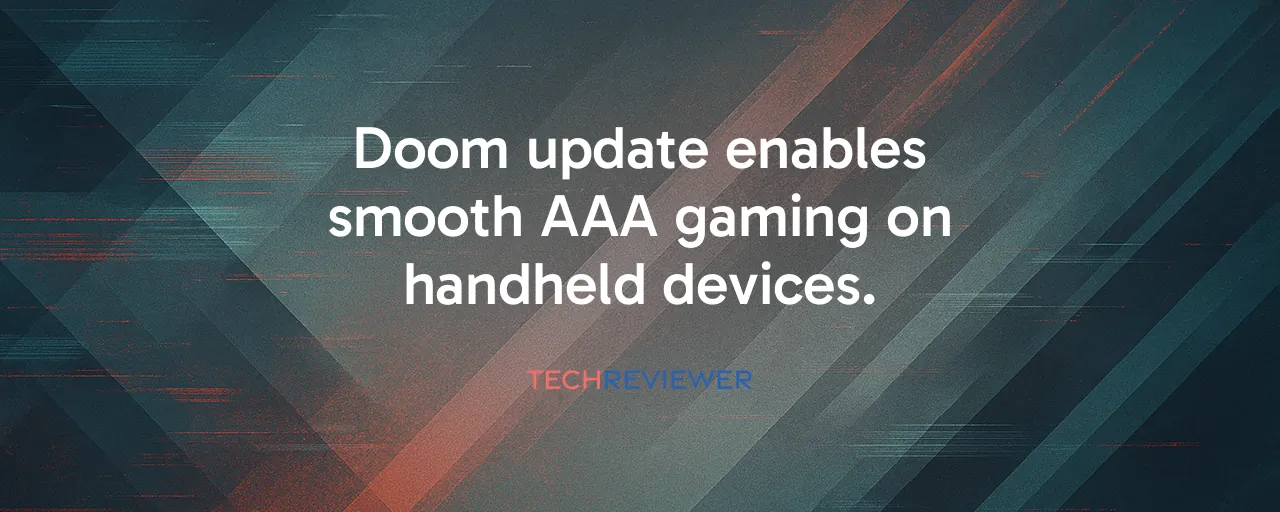A New Era for Handheld Gaming
Handheld gaming used to mean compromises: lower resolutions, choppy frame rates, or missing features. But when id Software dropped Update 2.2 for Doom: The Dark Ages on October 15, 2025, it signaled a shift. This patch transformed devices like the Steam Deck, ASUS ROG Ally, and Lenovo Legion Go into legitimate platforms for a AAA shooter. Achieving Steam Deck Verified status, the update delivers smooth gameplay at 720p and about 30 FPS on older hardware like the Steam Deck and ASUS ROG Ally, while Z2E devices such as the Xbox ROG Ally X can reach 1080p at around 60 FPS. For players who love slaying demons on the go, this is a massive win.
What makes this update stand out is its focus on accessibility. The game now detects your device's specs on first launch, automatically dialing in optimal settings so you don't have to dig through menus or scour forums for tweaks. Whether you're playing on a Steam Deck during a commute or docking an ROG Ally X for a big-screen session, the experience feels seamless. Portable gaming now receives the same level of care as high-end PC rigs.
Breaking Down the Technical Triumph
Under the hood, Update 2.2 is a masterclass in optimization. The idTech 8 engine, known for its efficiency, got a serious workout here. Developers leaned on data-oriented architecture, aligning memory to minimize latency and boost performance on low-power devices. Visual and sound effects were streamlined to keep handhelds cool under pressure, while a new benchmark mode lets players test their setup's limits. For docked players, external controller support switches inputs effortlessly, making the game as flexible as it is brutal.
The patch also squashes dozens of bugs that plagued earlier versions. Enemy AI glitches, like crashes from Shield Throw combos, are gone. Visual quirks, such as glowing weapons or stray purple lines, have been cleaned up. Even the Brink of Death system, which saves players from sudden wipeouts, received a balance tweak to feel fairer across difficulties. These fixes don't just help handheld players; they polish the experience for everyone, whether you're on Xbox, PlayStation, or a beefy desktop.
Learning From the Past: Doom vs. Cyberpunk
To appreciate Update 2.2's impact, compare it to another high-profile case: Cyberpunk 2077. When CD Projekt Red's open-world epic launched in 2020, it stumbled hard, especially on consoles, with crashes and performance issues that frustrated players. Years of patches eventually turned it into a gem, but the slow recovery left scars. Doom: The Dark Ages, by contrast, moved faster. Launched in May 2025, it faced handheld woes but didn't languish. By October, id Software delivered a patch that flipped the game from unplayable to Verified on Steam Deck, showing how rapid, focused updates can rebuild trust.
Another lesson comes from Elden Ring's handheld journey. FromSoftware's 2022 masterpiece ran decently on Steam Deck at launch, but only after community tweaks bridged the gap. Official optimizations came later, proving developers often rely on player ingenuity early on. Doom's team took a different tack, proactively building handheld support into Update 2.2. The result? Players didn't need to hack together solutions; id Software handed them a polished product. These cases highlight a truth: great games need great follow-through, and Doom delivers where others lagged.
What It Means for Players and the Industry
For players, Update 2.2 opens new ways to enjoy Doom: The Dark Ages. Commuters can rip through demons on a Steam Deck without stuttering. Competitive players can grind The Ripatorium's endless arena on an ROG Ally, now free of Vagary spawn glitches. Even casual fans benefit from smoother mechanics and fewer crashes. The update's device-specific settings mean your tweaks stick, whether you swap between handhelds or plug into a TV. It's gaming that fits your life, not just your desk.
The bigger picture is even more exciting. Handheld gaming is no longer a niche. With millions of Steam Deck and ROG Ally owners, publishers like Bethesda see the value in optimizing for portability. This patch, timed with Xbox-branded ROG Ally launches, shows how developers and hardware makers are teaming up to make handhelds a core platform. But challenges remain: 30 FPS caps on most devices and battery life constraints limit long sessions. Still, Update 2.2 proves AAA games can thrive on the go, setting a bar for others to follow.
Looking Ahead: The Future of Portable Power
Doom: The Dark Ages' handheld leap is just the start. As AMD's Z2 and Z3 processors roll out, and with Valve hinting at a Steam Deck successor, portable hardware keeps closing the gap with PCs. Developers are noticing. Optimizing for handhelds isn't an afterthought anymore; it's a priority. id Software's work here shows how smart engineering can stretch a game's reach, letting players enjoy the same thrills whether they're on a couch or a train.
Still, there's room to grow. Battery life needs a boost to handle AAA titles for more than a couple of hours. Frame rates should aim for a steady 60 FPS to match the genre's fast-paced demands. As more devices hit the market, developers will need streamlined ways to support them without endless custom tweaks. For now, Update 2.2 stands as a bold step forward, proving that even a demon-slaying epic can fit in your pocket. If this is what id Software can do in five months, the future of handheld gaming looks downright ferocious.
